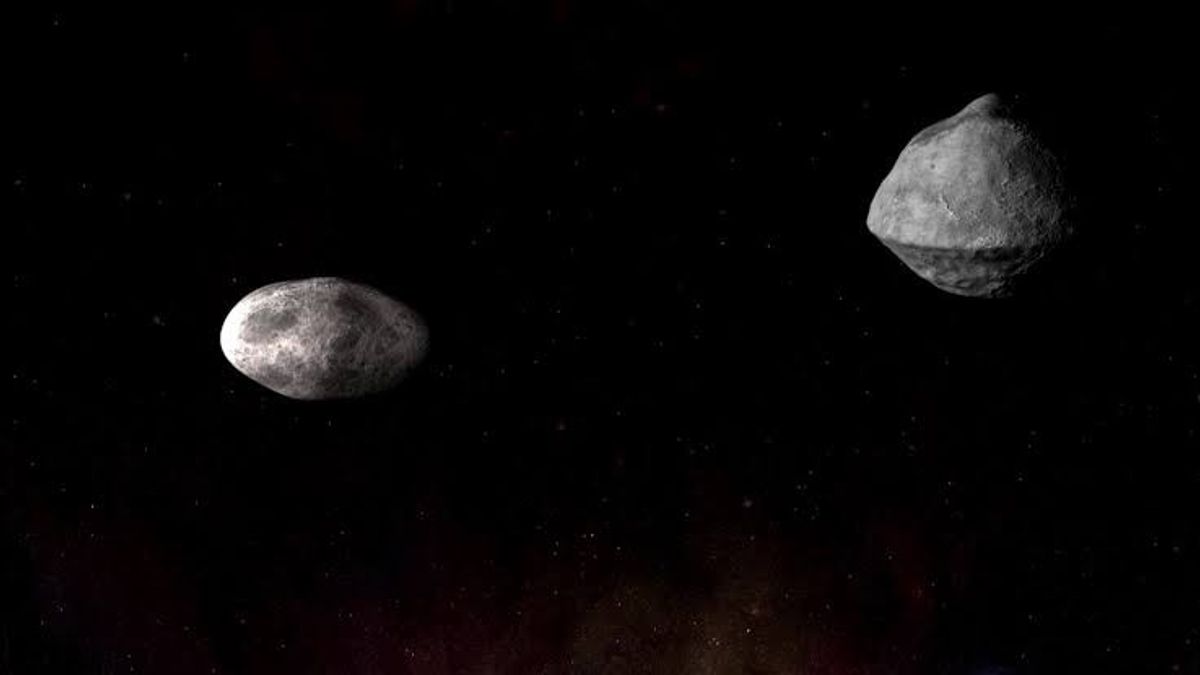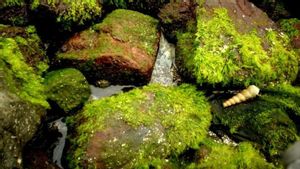JAKARTA - Scientists have just discovered a twin asteroid that may be Earth's newest neighbor. The asteroids, which are about 600,000 miles apart, appear to have separated from their parent asteroids only a few centuries ago.
First discovered in 2018, scientists studying the formation of flying asteroids PR2 and QR6 near-Earth recently concluded that the pair may be young descendants of a parent asteroid that split in half 300 years ago, making them the youngest asteroid pair ever seen.
"It is exciting to find pairs of young asteroids that formed only about 300 years ago, such as this morning, even yesterday on astronomical timescales," said Astronomical Institute of the Czech Academy of Sciences astronomer and first author of the study. Petr Fatka.
Scientists have identified more than 200 asteroid pairs, as well as space rock resulting from the breakup of the parent asteroid in the last few million years, but this study notes that most of the twin asteroids orbit the Sun in the main asteroid belt between Mars and Jupiter.
Although the highly eccentric orbits of asteroids PR2 and QR6 bring them nearly to the orbit of Saturn, they are considered near-Earth objects because they are only about 173 million kilometers from the Sun. This asteroid pair never passes closer than about 40 million kilometers from Earth.
BACA JUGA:
The scientists then combined new observations of asteroids PR2 and QR6 with historical data from the Catalina Sky Survey in 2005, which missed asteroids at the time.
Launching The Independent, Thursday, February 10, they then applied various models to reverse the orbital paths of the two asteroids, concluding that the asteroids likely came from a single object in the last few centuries.
For your information, Asteroids PR2 and QR6 are type D asteroids, dark agglomerations of various materials that are known to sometimes self-rotate until they rupture due to the Yarkovsky O'Keefe RadzievskiinPaddack (YORP) effect, in which the scattering is uneven due to solar radiation driving the asteroid's rotation.
NASA itself identified the YORP effect as the cause of the change in rotational speed of the asteroid Bennu, the target of NASA's OSIRIS-REx mission.
However, scientists found the YORP effect was insufficient to explain how the asteroid pair orbited. Instead, they say the asteroid pair's parent body may have resembled a comet, containing water or gaseous ice that sublimates into gas as the parent body passes closer to the Sun, releasing gas that accelerates the body's spin until it breaks into two uneven pieces.
PR2 is about one kilometer in diameter, and QR6 is about 500 meters in diameter. But understanding how a comet or comet-like object split to form two asteroids will require further research, such as targeted observations from the new James Webb Space Telescope.
After passing the Sun in 2019, PR2 and QR6 won't be in range again until 2033, which means the Webb Telescope will take longer. The findings were published in the Monthly Notices of the Royal Astronomical Society, on February 2. Click here for more details.
The English, Chinese, Japanese, Arabic, and French versions are automatically generated by the AI. So there may still be inaccuracies in translating, please always see Indonesian as our main language. (system supported by DigitalSiber.id)














